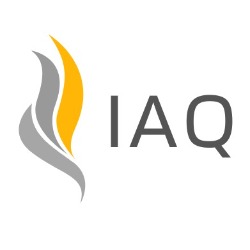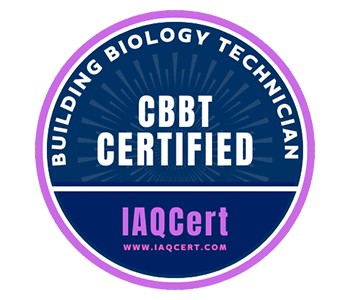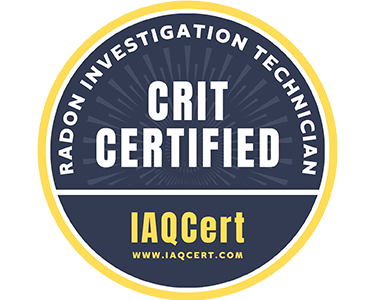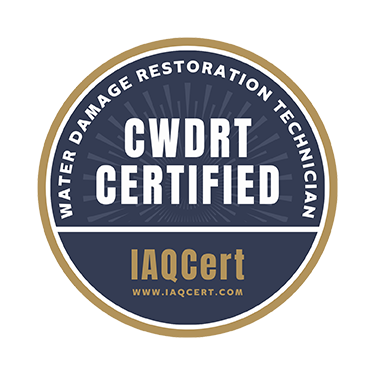Certified Water Damage Restoration Technician (CWDRT)
The Certified Water Damage Restoration Technician (CWDRT) course trains professionals to mitigate and restore properties damaged by water. CWDRTs are skilled in identifying the cause and extent of water damage, developing action plans, and restoring properties to their pre-damage condition. The certification program covers water damage inspection, evaluation, extraction, drying techniques, and mold remediation. By obtaining CWDRT certification, professionals demonstrate their commitment to providing high-quality water damage restoration services and staying current with industry best practices.
Overview
Certification
As a CWDRT-certified technician, you’ll deliver essential water damage restoration services that protect and restore healthy indoor environments.
This Assessment-Based Certificate (ABC) program validates your expertise in moisture assessment, structural drying, and contamination control, reinforcing your commitment to professional restoration standards. After passing the exam, you can proudly display your digital IAQCert badge on your website, flyers, or social media to highlight your verified professionalism and dedication to safe, effective water damage recovery.
Learning Approach
1. LearnEase
Ideal for beginners, offering 42 engaging lectures across 14 comprehensive modules. Engage at your own pace and use the extensive material as a valuable resource bank.
2. CertFast
Perfect for experienced professionals. A focused 1-hour exam to validate your skills quickly, bypassing the extended learning modules.
Learning Outcomes
- Identify water damage problems and their sources.
- Understand water damage restoration principles.
- Select appropriate assessment methods and equipment.
- Interpret results and develop restoration strategies.
- Communicate effectively with property owners and stakeholders.
- Maintain accurate documentation.
- Comply with relevant regulations and guidelines.
- Recognize emerging issues and trends in water damage restoration.
Offering both a Comprehensive Learning Path (LearnEase) and a Fast-Track Exam Path (CertFast), our CADCT course equips you with essential skills and knowledge to excel as an Water Damage Restoration Technician.
Enrollment & Certification Policy
Your enrollment includes full access to all course materials and the final exam for one year from your original date of enrollment. Certification is awarded immediately upon successfully passing the exam, and it remains valid until one year from your initial enrollment date. Students who enroll in a Technician Certification are eligible to receive one Safety course of their choice free of charge. To redeem this benefit, please contact IAQCert support after completing your Technician course enrollment.
Curriculum
Curriculum
- 14 Sections
- 42 Lessons
- 52 Weeks of Access
- Introduction to Water Damage Restoration3
- Basic Terminology and Concepts:3
- Safety Precautions and Health Hazards3
- Principles of Water Damage Restoration3
- Inspection and Initial Steps3
- Water Damage Equipment and Tools3
- Structural Drying Techniques3
- Restorative Cleaning Procedures3
- Mold and Mildew Control3
- Documentation and Job Coordination3
- Ethics and Legal Issues3
- Industry Organizations and Standards8
- 12.1Institute of Inspection, Cleaning and Restoration Certification (IICRC)21 Minutes
- 12.2Restoration Industry Association (RIA)20 Minutes
- 12.3Indoor Air Quality Association (IAQA)25 Minutes
- 12.4American Council for Accredited Certification (ACAC)5 Minutes
- 12.5National Institute of Disaster Restoration (NIDR)6 Minutes
- 12.6Environmental Protection Agency (EPA)5 Minutes
- 12.7Occupational Safety and Health Administration (OSHA)5 Minutes
- 12.8National Association of Mold Professionals (NAMP)5 Minutes
- Appendix1
- CWDRT Certification Exam5





